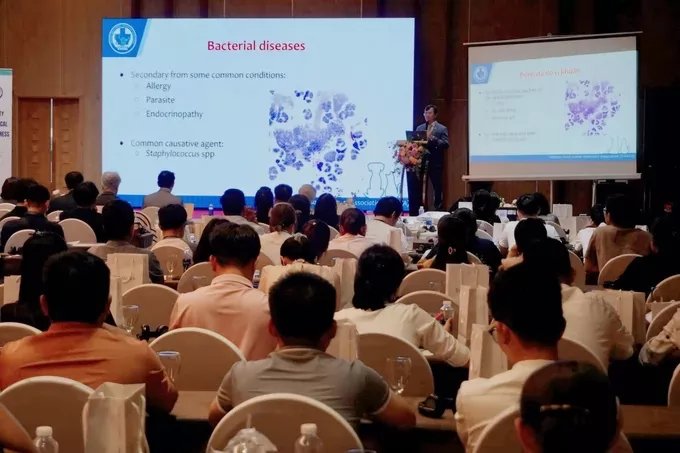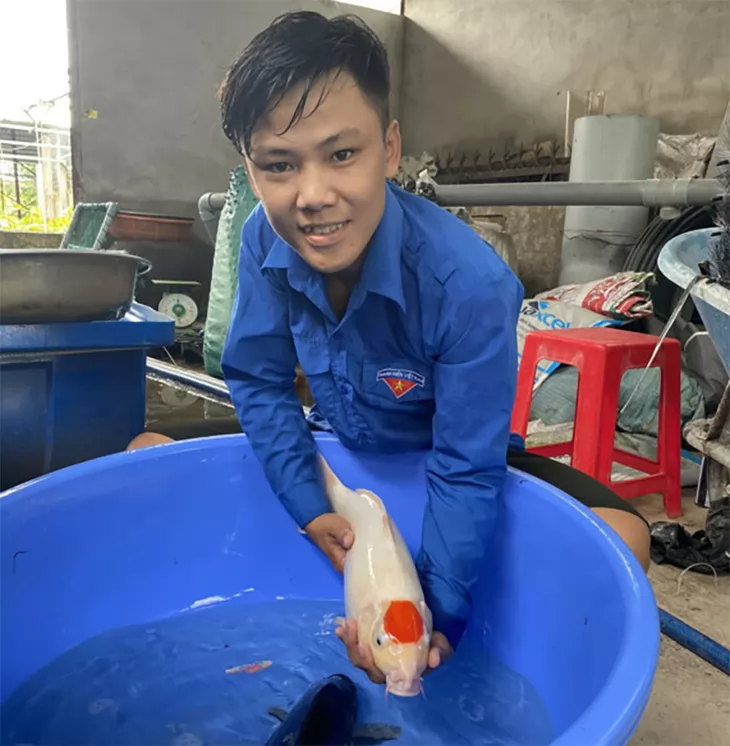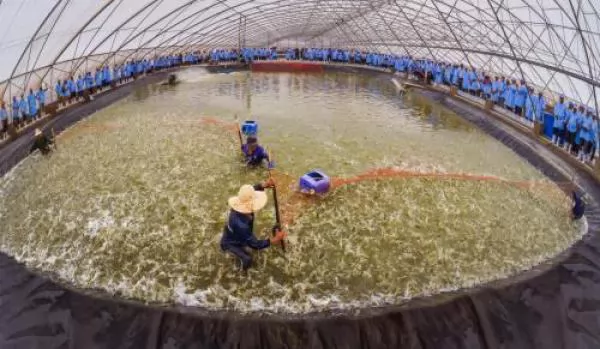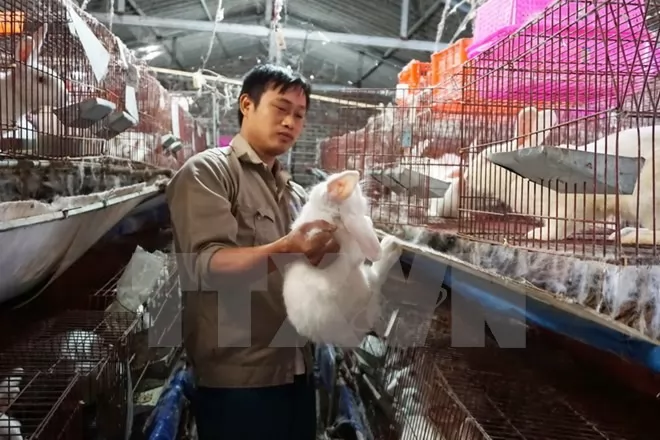The rate of external parasites among pets in Vietnam surges

15 specialized reports in the field of veterinary dermatology were presented at the 6th Asian Veterinary Dermatology Association Scientific Conference. Photo: A.N.
(VAN) Ensuring environmental sanitation is crucial for preventing and treating skin diseases in pets. However, Vietnam has not yet fulfilled this requirement.
The 6th Asian Veterinary Dermatology Conference was held on July 5 in Da Nang City, Vietnam, hosted by the Vietnam Small Animal Veterinary Association in partnership with the Korean Veterinary Dermatology Association and the Asian Veterinary Dermatology Association.
The event provides a platform for regional veterinarians to share and exchange experiences in diagnosing, testing, and treating skin disorders in pets, with presentations from Korean, Thai, and Vietnamese experts on diverse themes related to skin diseases in dogs and cats.
In Vietnam, the prevalence of skin diseases in dogs is high due to the country's tropical monsoon environment and living conditions. Common skin illnesses encompass allergic dermatitis, external parasite infections, as well as bacterial and fungal infections.
The American Feed Industry Association (AFIA) survey found that the most frequently seen problems in veterinary clinics include allergic dermatitis, hormone abnormalities, bacterial infections, allergies, fungal infections, and parasite infections, with a prevalence rate of 50%. It is important to note that certain skin diseases in pets can be passed on to humans. Examples of these diseases include ringworm, dog mites, fleas, and lice. They can cause intense itching, dermatitis, and secondary infections in humans.
Associate Professor Dr. Le Quang Thong from the University of Agriculture and Forestry in Ho Chi Minh City advises that ensuring proper cleanliness for pets, administering parasite prevention medicine, and scheduling frequent health check-ups are effective measures to safeguard pets against disease-causing agents. In addition, practicing proper hand hygiene after coming into contact with pets and minimizing contact with pets that have skin ailments can effectively mitigate the danger of transmitting skin diseases from pets to humans.

Currently, dermatological diseases appearing on pets in Vietnam are quite common. Photo: D.T.
"Ensuring proper environmental sanitation is crucial for preventing and treating skin diseases in pets, and Vietnam has yet to fulfill this essential requirement. This is the reason for the elevated infection rate in comparison to the rate observed a decade ago," Thong stated.
The conference will make a significant contribution to the development of the veterinary industry, especially the small animal veterinary sector. It features 15 carefully researched scientific reports presented by prominent domestic and international experts, researchers, and scientists in veterinary dermatology.
Furthermore, it offers training and practical experience for veterinarians in diagnosing and treating skin illnesses in dogs and cats, including pruritic skin in dogs, atopic dermatitis in cats, and the latest information on immune-mediated skin diseases in dogs and cats.
This program is a component of the state's initiative to strengthen strategic and multidisciplinary collaboration between Vietnam and South Korea in 2024.
Authors: Le Khanh - Anh Nguyen
Translated by Linh Linh
Maybe you are interested

Vietnamese fish farmer generates impressive income from quality koi farm
A young Vietnamese man is generating up to US$63,000 in revenue each year from his high-quality model of koi carp farming.

First breeding shrimp farm in Vietnam meets OIE standards
A breeding shrimp farm of the Viet-Uc Seafood Corporation in the Mekong Delta province of Bac Lieu has become the first in Vietnam to fulfill criterion set by the World Organisation for Animal Health (OIE).

Bắc Ninh youths struggle to access loans
Viet Nam News / BẮC NINH — The national fund of employment assistance from the Hồ Chí Minh Communist Youth Union has helped youths from northern Bắc Ninh Province launch businesses. However, a lot of local youngsters still find it difficult to access the fund.





